In the world of compact SUVs, the competition is fierce, particularly between two of the most acclaimed brands: BMW and Volvo. The BMW X1 and the Volvo XC60 offer not only compelling aesthetics but also a multitude of technical innovations and powertrains that can entice potential buyers. In this article, we will dive deep into a detailed comparison of these two renowned models, examining their technical aspects, innovations, and what sets them apart.
BMW X1 vs Volvo XC60 – Differences & prices compared
Two cars, one duel: BMW X1 meets Volvo XC60.
Which one wins in performance, efficiency and value for money? Find out now!
Overview of the BMW X1
The BMW X1 is a well-regarded compact SUV boasting a blend of driving performance and practicality. With a range of powertrains, including petrol, diesel, mild-hybrid, and plug-in hybrid options, the X1 caters to varied preferences. It offers both front-wheel and all-wheel drive configurations, enhancing its adaptability in different driving conditions.
Technical Specs of the BMW X1
Under the hood, the X1 is equipped with engine options that range from 150 to 326 horsepower, depending on the variant chosen. It demonstrates impressive fuel efficiency, with consumption rates varying from 4.6 to 7.7 liters per 100 km, depending on the engine configuration. The BMW X1 also offers swift acceleration, with the top-performing version reaching 0-100 km/h in just 5.4 seconds, showcasing its sporty nature.
Interior and Cargo Space
Interior comfort is paramount in the BMW X1, which accommodates five passengers. With a trunk capacity of up to 540 liters, it outshines many competitors in terms of practicality. Additionally, the vehicle’s dimensions of 4500 mm in length and 1845 mm in width provide ample space and a commanding road presence.
Innovative Features of the BMW X1
Equipped with the latest BMW iDrive technology, the X1 seamlessly integrates connectivity and infotainment, offering a user-friendly experience. Additionally, advanced driver assistance systems, such as lane-keeping assist and adaptive cruise control, elevate safety and convenience for drivers.
Overview of the Volvo XC60
On the other end, the Volvo XC60 is known for its Scandinavian design, premium materials, and high safety ratings. As a mid-size SUV, it provides a more spacious feel and is designed with comfort and elegance in mind.
Technical Specs of the Volvo XC60
The XC60 offers fewer engine options, focusing primarily on petrol mild-hybrid and plug-in hybrid variants, with power outputs ranging from 250 to an impressive 455 horsepower. While it has a higher fuel consumption rate of 7.7 L/100 km, it compensates with potent performance, achieving 0-100 km/h in as little as 4.9 seconds in the top trim. However, its maximum speed is capped at 180 km/h.
Interior and Cargo Space
The XC60 marries luxury with practicality, offering a slightly smaller trunk capacity of 483 liters when compared to the X1. Nevertheless, with its overall length of 4688 mm and a width of 1902 mm, the XC60 provides a spacious interior designed for modern comforts.
Innovative Features of the Volvo XC60
Volvo’s commitment to safety is legendary, and the XC60 is a testament to that with its suite of advanced safety features, including automatic emergency braking, blind-spot monitoring, and a comprehensive suite of airbags. Moreover, an intuitive infotainment system anchored by a large vertical touchscreen enhances user experience and connectivity.
Final Verdict
Both the BMW X1 and Volvo XC60 are formidable contenders in their class, each offering distinct advantages. The X1 leans more towards sporty performance and practicality, making it an engaging drive, while the XC60 focuses on luxurious comfort and unmatched safety features, appealing to families and those prioritizing premium experiences. Ultimately, your choice between these two vehicles will depend on your specific needs and preferences, but in either case, you're likely to end up with a well-rounded, capable SUV.
Here’s where it gets real: The technical differences in detail
Costs and Efficiency:
Price and efficiency are key factors when choosing a car – and this is often where the real differences emerge.
BMW X1 has a evident advantage in terms of price – it starts at 38200 £, while the Volvo XC60 costs 49200 £. That’s a price difference of around 10963 £.
Fuel consumption also shows a difference: BMW X1 manages with 0.80 L and is therefore clearly more efficient than the Volvo XC60 with 2.80 L. The difference is about 2 L per 100 km.
As for range, the BMW X1 performs barely noticeable better – achieving up to 83 km, about 1 km more than the Volvo XC60.
Engine and Performance:
Under the bonnet, it becomes clear which model is tuned for sportiness and which one takes the lead when you hit the accelerator.
When it comes to engine power, the Volvo XC60 has a clearly perceptible edge – offering 455 HP compared to 326 HP. That’s roughly 129 HP more horsepower.
In acceleration from 0 to 100 km/h, the Volvo XC60 is to a small extent quicker – completing the sprint in 4.90 s, while the BMW X1 takes 5.40 s. That’s about 0.50 s faster.
In terms of top speed, the BMW X1 performs evident better – reaching 250 km/h, while the Volvo XC60 tops out at 180 km/h. The difference is around 70 km/h.
There’s also a difference in torque: Volvo XC60 pulls clearly perceptible stronger with 709 Nm compared to 477 Nm. That’s about 232 Nm difference.
Space and Everyday Use:
Whether family car or daily driver – which one offers more room, flexibility and comfort?
Both vehicles offer seating for 5 people.
In curb weight, BMW X1 is evident lighter – 1575 kg compared to 1900 kg. The difference is around 325 kg.
In terms of boot space, the BMW X1 offers somewhat more room – 540 L compared to 483 L. That’s a difference of about 57 L.
In maximum load capacity, the BMW X1 performs minimal better – up to 1600 L, which is about 57 L more than the Volvo XC60.
When it comes to payload, Volvo XC60 barely noticeable takes the win – 550 kg compared to 500 kg. That’s a difference of about 50 kg.
Who wins the race?
The BMW X1 proves to be dominates this comparison and therefore becomes our DriveDuel Champion!
BMW X1 is the better all-rounder in this comparison.
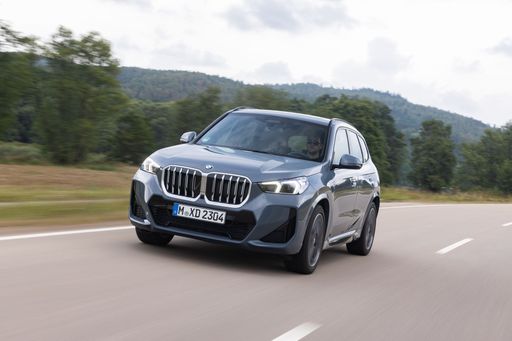 @ BMW Group Press
@ BMW Group Press
BMW X1
BMW X1
The BMW X1 brings a premium feel to compact crossover life, wrapping practical space and agile handling into a tidy, upscale package. It’s ideal for buyers who want BMW driving dynamics without the bulk, offering everyday comfort and a few clever tricks to keep the commute interesting.
details @ BMW Group Press
@ BMW Group Press
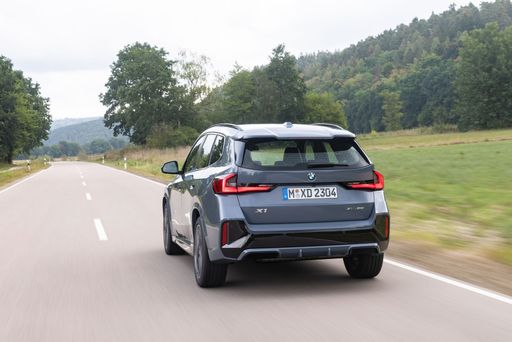 @ BMW Group Press
@ BMW Group Press
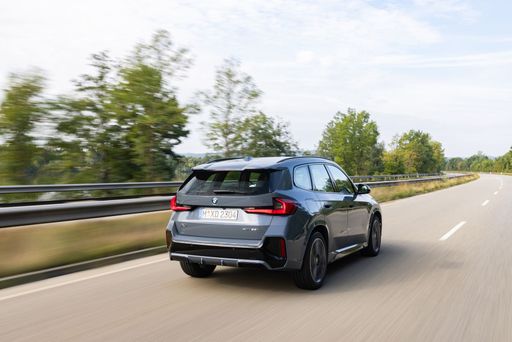 @ BMW Group Press
@ BMW Group Press
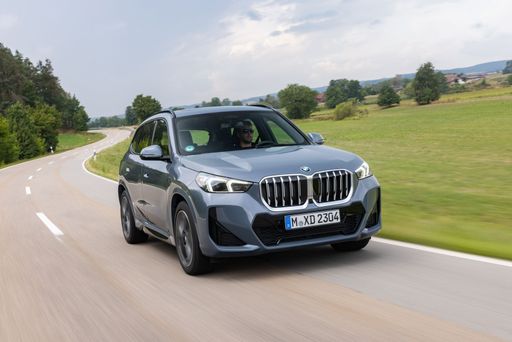 @ BMW Group Press
@ BMW Group Press
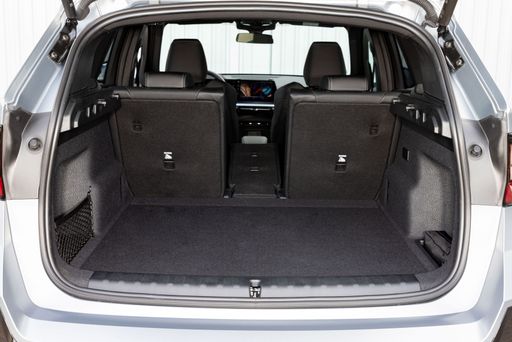 @ BMW Group Press
@ BMW Group Press
Volvo XC60
The Volvo XC60 blends Scandinavian calm with confident presence, offering a cabin that feels plush without shouting for attention. It’s a smart pick for buyers after a composed ride, clever practicality and thoughtful safety touches — it even makes running the family shuttle feel almost serene, which is a small miracle.
details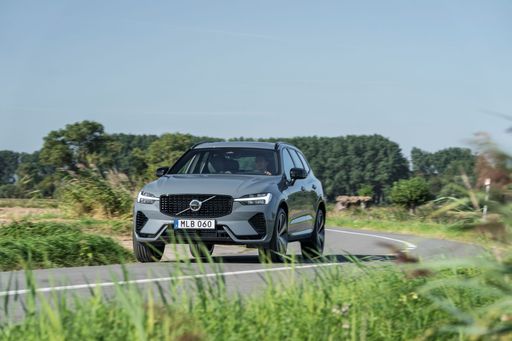 @ Volvo Cars
@ Volvo Cars
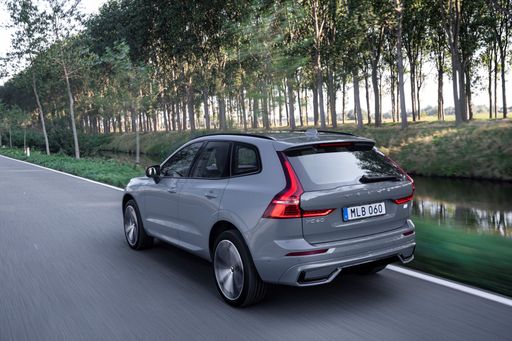 @ Volvo Cars
@ Volvo Cars
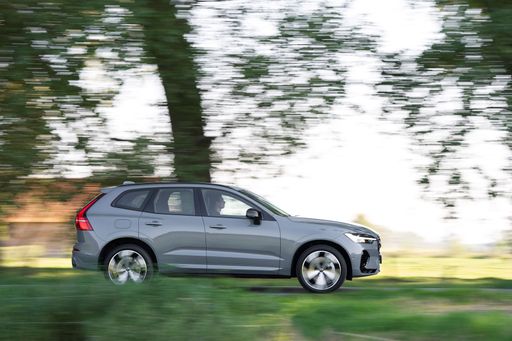 @ Volvo Cars
@ Volvo Cars
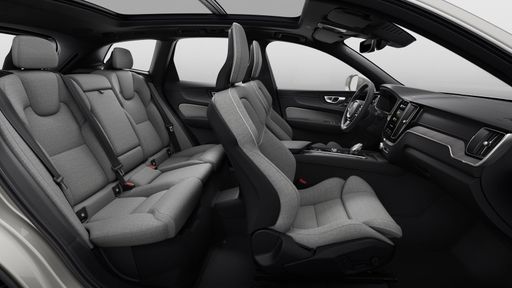 @ Volvo Cars
@ Volvo Cars
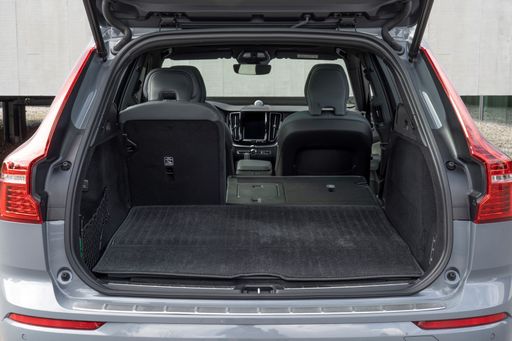 @ Volvo Cars
@ Volvo Cars
 @ BMW Group Press
@ BMW Group Press
|
 @ Volvo Cars
@ Volvo Cars
|
|
|
|
Costs and Consumption |
|
|---|---|
|
Price
38200 - 55500 £
|
Price
49200 - 75100 £
|
|
Consumption L/100km
0.8 - 7.7 L
|
Consumption L/100km
2.8 - 7.5 L
|
|
Consumption kWh/100km
-
|
Consumption kWh/100km
-
|
|
Electric Range
83 km
|
Electric Range
74 - 82 km
|
|
Battery Capacity
14.20 kWh
|
Battery Capacity
14.70 kWh
|
|
co2
17 - 175 g/km
|
co2
64 - 169 g/km
|
|
Fuel tank capacity
47 - 54 L
|
Fuel tank capacity
71 L
|
Dimensions and Body |
|
|---|---|
|
Body Type
SUV
|
Body Type
SUV
|
|
Seats
5
|
Seats
5
|
|
Doors
5
|
Doors
5
|
|
Curb weight
1575 - 1935 kg
|
Curb weight
1900 - 2150 kg
|
|
Trunk capacity
490 - 540 L
|
Trunk capacity
468 - 483 L
|
|
Length
4500 - 4505 mm
|
Length
4708 mm
|
|
Width
1845 mm
|
Width
1902 mm
|
|
Height
1622 - 1642 mm
|
Height
1651 - 1655 mm
|
|
Max trunk capacity
1495 - 1600 L
|
Max trunk capacity
1528 - 1543 L
|
|
Payload
490 - 500 kg
|
Payload
510 - 550 kg
|
Engine and Performance |
|
|---|---|
|
Engine Type
Diesel MHEV, Petrol MHEV, Plugin Hybrid, Petrol, Diesel
|
Engine Type
Petrol MHEV, Plugin Hybrid
|
|
Transmission
Automatic
|
Transmission
Automatic
|
|
Transmission Detail
Dual-Clutch Automatic
|
Transmission Detail
Automatic Gearbox
|
|
Drive Type
Front-Wheel Drive, All-Wheel Drive
|
Drive Type
All-Wheel Drive
|
|
Power HP
136 - 326 HP
|
Power HP
250 - 455 HP
|
|
Acceleration 0-100km/h
5.4 - 9.2 s
|
Acceleration 0-100km/h
4.9 - 6.9 s
|
|
Max Speed
190 - 250 km/h
|
Max Speed
180 km/h
|
|
Torque
230 - 477 Nm
|
Torque
350 - 709 Nm
|
|
Number of Cylinders
3 - 4
|
Number of Cylinders
4
|
|
Power kW
100 - 240 kW
|
Power kW
184 - 335 kW
|
|
Engine capacity
1499 - 1998 cm3
|
Engine capacity
1969 cm3
|
General |
|
|---|---|
|
Model Year
2023 - 2025
|
Model Year
2025
|
|
CO2 Efficiency Class
D, E, B, F
|
CO2 Efficiency Class
F, B
|
|
Brand
BMW
|
Brand
Volvo
|
Is the BMW X1 offered with different drivetrains?
The BMW X1 is offered with Front-Wheel Drive or All-Wheel Drive.
The prices and data displayed are estimates based on German list prices and may vary by country. This information is not legally binding.
